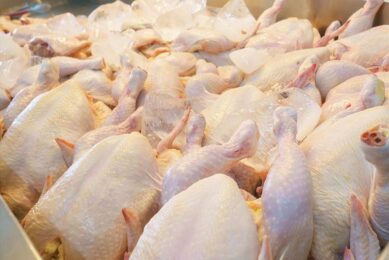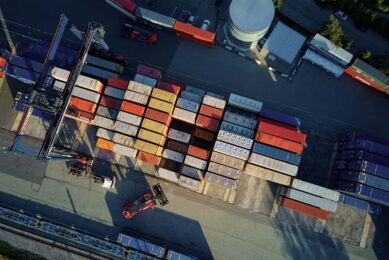Rabobank: Poultry outlook threatened by bird flu

Rabobank has published a new report on supply, demand and pricing trends in the global poultry industry, and conditions which will affect the industry outlook for the rest of the year.
In the report, Rabobank’s Food & Agribusiness Research and Advisory group says that the positive outlook for the global poultry industry is highly dependent on the continuation of several trends: a balance in local supply and demand; falling feed costs, and ongoing high prices for competitive meats, such as pork and beef.
Key wildcards for the rest of the year will be global trade developments (which were very weak in Q1 2013) and the impact of avian influenza virus H7N9 on the Chinese poultry industry.
Rabobank poultry analyst Nan-Dirk Mulder commented, “Conditions for the global poultry industry have improved thanks to a further slowdown in feed price growth, which is helping to boost margins. While we expect this trend to continue, a positive outlook will depend very much on how well the industry can balance its markets and whether the bird flu outbreak in parts of China can be contained. If it were to spread further across the Asian region, we can expect an impact on poultry markets globally.”
The Chinese poultry industry has been suffering ever since the official announcement of H7N9 in March 2013, which has so far resulted in 130 human cases and claimed the lives of 36 people as of May 20th. As a consequence of falling demand, prices collapsed and farmers have commenced a large scale slaughtering of birds with no replenishment to broods as they adopted a wait-and-see attitude. Local governments in affected areas have extended help to the sector in order to limit the impact on the industry; this assistance comes in the form of purchasing programs or compensation offered to poultry merchants in return for slaughtering their stocks.
While consumers remain wary, the initial panic appears to be waning as the pace of growth of new infections has slowed. Still, in the six weeks after the first case was confirmed, China’s poultry industry reported losses amounting to RMB 40 billion (USD 6.5 billion).
The Chinese government has reacted to concerns about the negative industry impact of the outbreak – namely future supply concerns – by implementing a new RMB 600 million breeding program aimed at preventing shortages when markets recover. This support program has led to some price recovery recently, but prices remain low.
The US and Brazil are performing better than in the first quarter, with a relatively healthy supply and demand situation limiting the impact of a weak international trade situation. The EU remains the weakest performing industry, as it is still challenged by relatively high feed prices combined with abundant supply.
In Asia, the Thai industry has greatly improved a consequence of large oversupply and is benefiting from strong demand for poultry products in the EU and Japan.
Source: Rabobank




![Birthe Steenberg, AVEC’s Secretary General: “Our [poultry] sector operates under the highest standards of animal welfare, biosecurity and sustainability in the world. Photo: Canva](https://www.poultryworld.net/app/uploads/2024/10/Untitled-design-79-389x260.jpeg)








